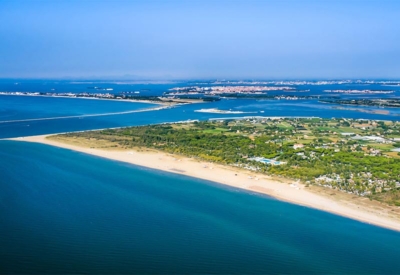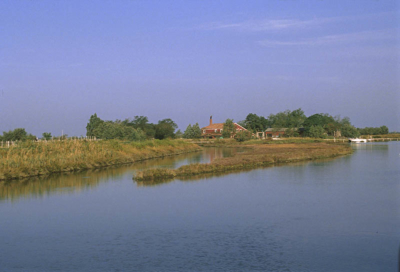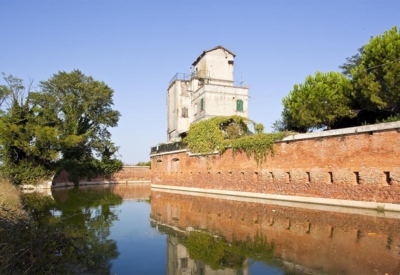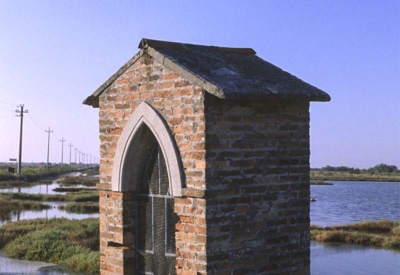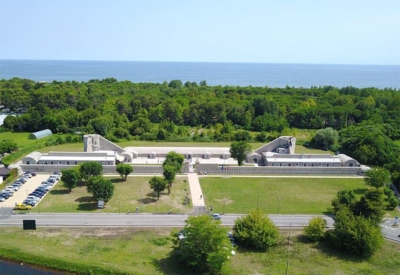CAVALLINO TREPORTI
The municipal area has a peninsula separating the northern part of the Venetian lagoon from the Adriatic Sea. The entire length of this peninsula is crossed by the Pordelio canal which branches into two other canals, the Portosecco and Saccagnana, towards the west. All three are navigable. It is a natural landscape of undeniable beauty, a carefully preserved territory where special flora and fauna from lagoon and sea coexist, with a series of diverse landscapes. There are expanses of mudflats and salt marshes, the fishing valleys and market gardens, historic villages, military architecture, lighthouses and docks, the sandy beach, the extensive pine forest, and the mouth of the River Sile. A nature park where the sea and lagoon merge, close to Venice. A unique environment stretching for 15 km.
Cavallino-Treporti, with 6.3 million visitors a year, is the Veneto’s leading beach and Italy’s second most popular seaside destination, with the largest concentration of “Superplatz” facilities (those offering the highest level of quality and services according to the German Automobile Club). The main attraction of Cavallino-Treporti is definitely the environment, the pride of this peninsula located between the Adriatic Sea and the Venice Lagoon.
From an economic point of view, open-air tourism is the sector that meets a growing demand for holidays in contact with nature, without sacrificing first-class services and comforts. . As well as 30 campsites and tourist resorts there are also hotels and B&Bs. The tourism sector is continually developing, and the town aims to become a ‘tourist park’ for its visitors, combining its business activities with its historical and natural heritage, its unique food and wine and its opportunities for relaxation and for experiencing the outdoors.
Because of the features of its landscape and the value of its history and heritage, the Cavallino-Treporti area lends itself to being a kind of open-air, spread-out museum: the ideal platform for organising themed ‘slow travel’ itineraries, not only for residents but also for eco-sustainable tourism. There are several bike or walking itineraries like ‘La Via delle 3 Acque’ (The Path of the Three Rivers), ‘La Via delle Fortificazioni’ (The Fortifications Trail), ‘La Via degli Orti della Laguna’ (The Lagoon Market Gardens Path) and ‘La Via del Tramonto’ (The Sunset Trail).
The area also has a large number of telemetry and observation towers, imposing batteries, bunkers built a short distance from the sea, ammunition depots, barracks and shelters that form an old coastal system of fortifications dating back to the First World War. The recently restored V. Pisani Battery is now a museum that can be visited and houses temporary exhibitions tracing the main historical stages of the Great War. In 2018 it hosted “Schegge, oggetti della Prima Guerra Mondiale” (Shrapnel: Objects from the First World War), “La Grande Guerra a Cavallino-Treporti” (The Great War in Cavallino-Treporti) from the Furio Lazzarini collection, “Sanità, percorso con oggetti e racconti vissuti” (Health: Objects and Lived Experiences) from the Erminio Scarpa collection and permanent exhibitions like “Via dei Forti, le fortificazioni nel Territorio” (The Fortifications Trail: Local Defences) and “Restauro delle Batterie V. Pisani e Amalfi” (Restoring the V.Pisani and Amalfi Batteries).
The Amalfi Battery is now part of the Via dei Forti museum network. Built between 1915 and 1917, it was designed to defend Venice. It never operated against naval targets but, thanks to its revolving tower, it struck Austro-Hungarian infantry and outposts on several occasions in the last battles fought on the Lower Piave Valley in 1918. New sites, like the Radaelli Battery with the exhibition “La Grande Guerra: Sistemi di difesa da Venezia lungo il Piave” (The Great War: Defensive Systems from Venice along the Piave) and the San Marco Battery, which houses the Parco della Memoria (Memorial Park), have also been opened to the public, with the help of private individuals.
Worth Visiting
Forte Vecchio (1845-1850) the imposing old Austrian fort at the south-western end of the coastline
The Church of Santa Maria Elisabetta. Built in the years 1744-51 with a contribution from the Dutch consul in Venice, Jacobus Fèitama. It was renovated in 1890, in 1906 (with a new bell tower) and in 1916 (with a new façade and apse) and was restored from 1985 to 1988.
The Church of the Santissima Trinità. This church on the Cavallino-Treporti coastline was built immediately after 1518. Next to it are two bell towers, one dating back to the 17th century and the other built by Don Emilio Manzoni in 1932, approximately 35 metres high.

